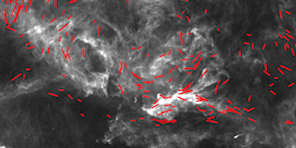RoboPol

RoboPol is a project aiming to elucidate the time evolution of the polarization of optical emission in blazars. Blazars are active galaxies power by supermassive black holes with relativistic jets that are closely aligned with our line of sight, resulting in boosted brightness across the electromagnetic spectrum, and high variability. Through the monitoring of the optical linear polarization of ~100 blazars, RoboPol aims to test models of the jet structure, composition, magnetic fields, and emission mechanism.
RoboPol is run by an international Collaboration including FORTH-IA and the University of Crete in Greece, the California Institute of Technology in the United States, the Max-Planck Institute for Radioastronomy in Bonn, Germany, the Nicolaus Copernicus University in Poland, and the Inter-University Centre for Astronomy and Astrophysics, in Pune, India. RoboPol is coordinated by IA Affiliated Faculty Vasiliki Pavlidou, and it uses the innovative optopolarimeter of the same name, designed and constructed at IUCAA by IA Research Fellow A.N. Ramaprakash. The RoboPol blazar monitoring program ran between 2013-2015 with an observing cadence of once per week, and with a daily cadence in the observing season of 2016. Currently RoboPol is engaged in a rigorous program of establishing high-accuracy optopolarimetric standards, which is expected to impact optopolarimetry studies in all fields of astrophysics. Beyond blazar science, RoboPol is additionally used to map the magnetic field in interstellar clouds and for a long-term monitoring of XBE stars.
The RoboPol program has been supported by the Skinakas Observatory, by the Greek General Secretariat for Research and Technology, and by the European Commission. The design and construction of the RoboPol polarimeter has been supported by the MPIfR, the Polish National Science Centre, IUCAA, and the Caltech Optical Observatories.
